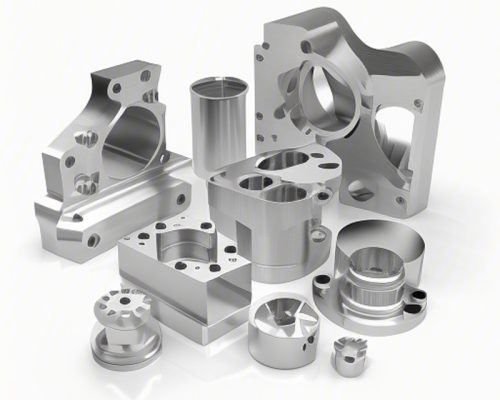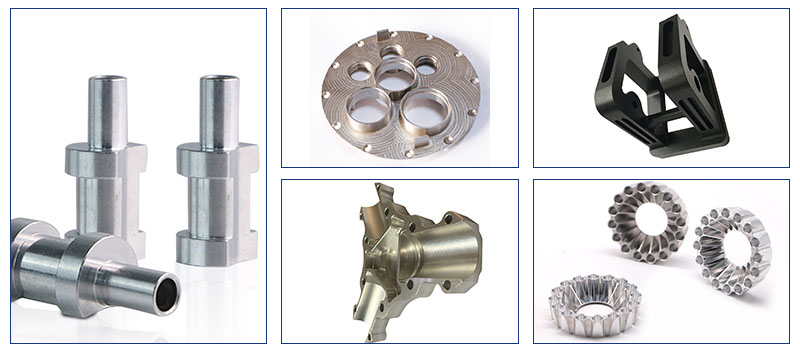In my experience as a CNC machining professional, I’ve seen how even the smallest deviations in robotic parts can lead to major operational setbacks. Imagine a robotic arm in an assembly line or a surgical robot in a critical procedure—it’s clear that precision isn’t just important; it’s vital. So, how does precision CNC machining elevate the quality of these components? Let’s dive in.
Why Accuracy Matters in Robotic Parts
Robotics is a field where every fraction of a millimeter counts. Accurate components are essential for robots to perform tasks with consistency and efficiency. Without precision, the following issues arise:
- Mechanical misalignments that disrupt movement and functionality.
- Increased wear and tear caused by imperfect fits.
- Higher failure rates, leading to costly downtime.
Take actuators, sensors, or gears, for example. These parts need to meet tight tolerances and exact specifications to function flawlessly. This is where CNC machining makes all the difference.
The Role of CNC Machining in Robotics
CNC machining stands out because it combines precision, repeatability, and versatility. Let’s explore how it enhances the accuracy of robotic parts:
1. Achieving Tight Tolerances
Robotics requires parts with micron-level tolerances. A deviation of even 0.01mm can lead to serious errors. With precision CNC machining, achieving tolerances as tight as ±0.001mm is possible.
At YL-Machining, we regularly manufacture parts such as:
- Gear systems with exact tooth profiles for seamless operation.
- Shafts and joints that fit perfectly to reduce unwanted play.
- Custom components tailored for specific robotic applications.
These tolerances ensure that the final assembly is reliable and efficient.
2. Handling Complex Geometries
Robots are becoming more advanced, which means their components are more complex. Precision CNC machining, especially with multi-axis machines, allows us to craft intricate parts with ease.
For example:
- 5-axis CNC machining can produce parts with curved surfaces or complex angles in a single setup.
- Intricate designs, like internal cavities or threads, are manufactured with precision that traditional methods can’t achieve.
This capability is essential for producing lightweight grippers or high-strength components for robotic joints.
3. Batch Consistency for Large-Scale Production
One of the most significant advantages of CNC machining is its ability to deliver consistency. Whether you need 10 parts or 10,000, the quality remains the same.
This consistency is crucial for robotics manufacturers who need:
- Uniform quality across production runs.
- High efficiency, reducing production time.
- Cost-effective scaling without compromising accuracy.
Automated CNC processes ensure that each part meets the same exacting standards, regardless of batch size.
4. Enhancing Surface Finishes
Did you know that surface finish directly impacts a robot’s performance? Rough or uneven surfaces can lead to friction, increased wear, and reduced efficiency. Precision CNC machining ensures superior surface finishes through techniques like:
- High-speed milling for smooth surfaces.
- Grinding for extremely tight tolerances.
- Polishing for low-friction, reflective finishes.
The result? Robotic parts that move smoothly, resist wear, and last longer.
Material Versatility for Robotics
Another reason CNC machining excels in robotics is its ability to work with diverse materials. From lightweight aluminum to durable titanium and engineered plastics, CNC machines handle them all.
For example:
- Aluminum alloys are perfect for lightweight components in mobile robots.
- Stainless steel offers corrosion resistance for robots operating in harsh environments.
- Plastics like PEEK or ABS are ideal for insulation or non-conductive parts.
With CNC machining, you can select the best material for your application without compromising on precision.
A Success Story: How CNC Machining Transformed a Robotics Project
At YL-Machining, we worked with a client developing robotic grippers for industrial use. Their key requirements were:
- Lightweight components to improve energy efficiency.
- High durability to withstand heavy loads.
- Exceptional accuracy for seamless integration.
Here’s how we delivered:
- Material Optimization: Chose high-strength aluminum to balance weight and durability.
- Precision Manufacturing: Used 5-axis CNC machining to produce intricate gripper designs with tight tolerances.
- Surface Finishing: Applied anodizing for added protection and a sleek finish.
The result? A product that outperformed expectations and lasted longer under demanding conditions.
Is Precision CNC Machining Right for Your Robotics Project?
If you’re grappling with issues like inconsistent part quality, misalignments, or high failure rates, CNC machining can be the solution you need. Here are a few questions to consider:
- Are your current manufacturing methods meeting your accuracy requirements?
- Do you need reliable scaling for mass production?
- Are material and design limitations holding back your robotics projects?
If you answered yes to any of these, precision CNC machining is worth exploring.
The Long-Term Benefits of CNC Machining
While CNC machining might seem like a significant investment initially, the long-term advantages are undeniable:
- Reduced waste and rework, saving costs over time.
- Longer-lasting components, reducing replacement expenses.
- Enhanced performance, leading to satisfied customers and fewer operational issues.
For robotics manufacturers, it’s a smart choice that pays off in performance and reliability.
Conclusion: Driving Robotics Innovation with CNC Machining
Precision CNC machining is a game-changer for robotics, offering unparalleled accuracy, consistency, and material versatility. At YL-Machining, we’re passionate about helping you achieve flawless results, whether you’re developing prototypes or scaling production.
Have questions or want to discuss your specific requirements? Let’s connect. Share your thoughts or challenges below—together, we can bring precision to your robotics projects.



